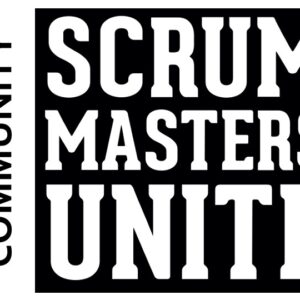How Leaders Can Unblock and Accelerate Organizational Improvements

In every State of Agile survey for the past several years leadership and cultural challenges have emerged as the most significant blockers to agile ways of working. I recently published a blog where I’ve pulled together some practices for leaders to consider and begin to address some of these challenges.
What do you think? Agree? Disagree? Anything significant leaders should know that you feel I’ve left off?
The next big thing

https://digital.ai/resources/blog/the-next-big-thing-in-agile
I just finished up some thoughts on “the next big thing” as it relates to agile progression. What do you think? Agree or Disagree? Do you see anything on the horizon that I missed?
Now is the time to accelerate your digital transformation

https://digital.ai/resources/blog/accelerate-your-digital-transformation
The opportunity is now
Digital.ai recently published the 14th State of Agile survey. Prior to that they released a “mini” survey to see how the global COVID-19 pandemic had changed the agile landscape. Initial review shows a strong demand for agile and digital transformation.
55% of respondents from the mini survey say their company plans to increase the use of agile in the next 12-24 months. This is an increase of 13% over the original survey just five months ago.
43% of mini survey respondents say their momentum for agile adoption has increased over the past 90 days, with 15% saying it has increased significantly.
33% of mini survey respondents say they increased or expanded agile adoption in the last 90 days to help manage distributed teams.
Companies that have been making an investment in agile and DevOps over the past few years are experiencing significant benefits. “Our all-in move to the cloud in recent years allowed us to go to fully virtualized in one day” said Kim Gocke, Sr. Director IT Capabilities at The Coca-Cola Company. “Our people showcased their agility in immediately reorganizing the work. For me, it was a “burn the ships” moment on our journey to agility.”
M.C. Moore, Sr. Scrum Master at IHG, also commented: “The COVID-19 pandemic has furthered our corporation’s business agility objectives by bringing everyone–business and IT, onshore and offshore–onto a level, virtualized playing field. Further, our transition to remote work would have been considerably more challenging had we not already been operating in an agile scrum setting.”
Agile transformation is key
The 14th State of Agile survey confirms what we’ve known…agile is a key tool that companies can leverage to address significant issues caused by this disruption.
“Most of our global teams,” said Derwin Roland, Agile Coach at NCR, “have experienced the same or higher levels of throughput and productivity through this time as we were forced into a greater level of being agile and not just doing agile.”
Change happens when the pain of staying the same is greater than the pain of change.
– Tony Robbins
Organizational change agents know this quote to be all too true. Many companies that have merely dabbled in their agile transformation are finally at the point where they are open to change, possibly for the first time. It’s key to harness this opportunity and bring about needed organizational operating improvements.
I’ve talked with many companies over the past few months and even those that are prepared for this and weathering the storm well are still cautious about the future. They realize there is no “done” when it comes to transformation, there is always a potential to improve and they’re not resting on their laurels. They are taking active steps to advance their digital transformation.
Where should companies invest?
If you’re starting your transformation or well on your way you may be wondering where to make operational investments. Consider these key areas.
Transparency
Transparency is critical to an effective working ecosystem. Ensure all work is visible in your work management system and reflects the organizational priorities. Invisible work and pet projects often steal valuable productivity and slow progress.
Prioritization
When companies get serious about transparency and all the work is finally visible in a single ALM tool they often realize teams are working on things that aren’t the top priority. Leadership (often facilitated product management) should examine the initiatives that are close to starting or currently underway and prioritize to make sure the most important work is getting executed first. To saying “Not now” to lower priority items allows needed focus on the features that will drive the most business value. There are several techniques you may employ to do this prioritization such as WSJF, MoSCow and Kano. Leverage these to find the most value to cost and let that be a basis for your decisions.
Speed to market
As most organizations’ features are brought to market by a collaboration of several different departments. Work with your team to map how value flows through the company as a whole and collect data from each area to see where your key bottlenecks are. Make investments to address those areas that impede flow through the entire system. This is often initiated through a value stream mapping workshop and then monitored continually. These insights are key to driving the right investments and getting more value faster to market
If you have questions about how to manage cost while accelerating value in your setting, our solution experts would be happy to set up some time to define a custom approach that addresses your unique challenges.
Learn more
Biz Agility – The cure for agile sweatshops?

Interesting article about agile sweatshops (Thanks Rohan for sharing it with me!). You see these type of cultures more often than I’d like…and I agree business agility might be part of the cure!
In the agile world of timeboxes don’t underestimate unstructured conversation

Wrapped up another great PI planning last week. As part of just about every planning I’ve done typically the company includes a happy hour/dinner after day 1, this is a picture of a unique idea…bring the party to the parking lot via foodtrucks!
I’ve found that time adds HUGE amounts of value to the planning sessions. Remote workers that fly in get to rekindle friendships with locals and conversations can unfold with no rushed time box. I think if I could add something to the SAFe placemat it’d be making sure these unstructured team building activities take place at PI planning! I’ve never been disappointed with the outcome!
The Ultimate Guide to Selecting a Conference Talk

So you finally got approval from your manager to go to a conference. The keynote speaker that kicked it off was ok, and now it’s decision time…what breakout session will you attend? Well allow me to introduce this handy guide to help you make that decision. I think the obvious first choice is to avoid speakers with sport coats all together…but if that’s not possible feel free to use this guide to inform your decision. Staying to the left of the chart will get you engagement, entertainment and a fair potential to stay awake. However if you’ve already heard that talk and venture to the right go armed with the appropriate level of caffeine…there are likely to be some golden nuggets in those talks, but there’s a high probability you’ll miss those completely if you dose off! I’m working on an easy reference business card size version you can easily keep on hand…let me know if you’re interested!


